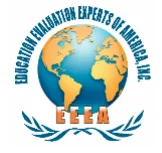Your EB1B green card application‘s success hinges on powerful EB1B recommendation letters. While many applicants focus on achievements and citations, these letters are crucial in demonstrating your extraordinary ability and international recognition to USCIS.
Research shows that strong EB1B recommendation letters significantly increase approval rates, yet many qualified candidates find this part of the process challenging.
This guide offers proven strategies for securing and crafting impactful EB1B recommendation letters that will strengthen your petition and enhance your chances of approval.
EB1B Recommendation Letter Requirements
Recommendation letters play a vital role in EB1B petitions. You need to pay close attention to USCIS standards and specifications.
Let’s understand what you need and how to get effective support letters.
USCIS Guidelines for Reference Letters
USCIS reviews recommendation letters using specific criteria to confirm an applicant’s international recognition. The administration wants qualified candidates to show substantial unsolicited materials that reflect their acclaim. USCIS values these elements:
- Letters from recognized experts with advanced degrees
- Documentation of 10+ years of field experience
- Evidence of extensive publication history
- Proof of international recognition
- Detailed analysis of contributions
Required Elements and Components
Your recommendation letter must include specific elements that meet USCIS requirements. Here’s everything you need:
- Detailed qualifications of the recommender
- Specific examples of the applicant’s achievements
- Clear evidence of international recognition
- Technical discussion of research effect
- Concrete examples of field contributions
- Explicit connection to EB1B criteria
Independent vs. Collaborative Letters
USCIS puts much weight on where recommendation letters come from. Independent testimonials from experts outside your immediate professional circle hold more authority than those from close colleagues. A mix of both types works best.
You should get letters from three different sources:
- Independent experts who know your work through publications
- Recognized authorities who’ve seen your research at conferences
- Select collaborators who can detail specific contributions
USCIS doesn’t specify an exact number, but 5-7 letters work best in an EB1B petition. This gives enough depth while keeping quality and impact high. Each letter should show your international recognition and outstanding abilities with specific examples and detailed analysis.
Note that letters describing you as knowledgeable without specific details about your field impact might hurt your case. Your letters should connect your achievements to the EB1B criteria and provide solid evidence of the importance of your contributions.
Selecting the Right Letter Writers
Your eb1b recommendation letter’s success depends on choosing the right recommenders who meet USCIS expectations. Strategic planning plays a key role in this process.
Qualifications of Ideal Recommenders
The most compelling letters come from recommenders who add real credibility to your petition. Look for these qualities:
- Recognized authorities who hold advanced degrees with over 10 years of experience
- Experts who have published and presented extensively
- Professionals who can talk about your specific achievements
- People who know how your research affects the field
- Authorities who can assess your recognition worldwide
Balance of International Experts
A strategic mix of recommenders makes your petition stronger by a lot. The best combination has both US-based and international experts who can confirm your global influence. Getting letters from at least three different countries helps prove your worldwide recognition.
Your recommenders should fall into these two groups to create the biggest effect:
- Subjective Sources: Direct collaborators, supervisors, or mentors who can give detailed explanations about your work
- Objective Sources: Independent experts who know your contributions through publications or conferences
Avoiding Common Writer Selection Mistakes
Our work with many EB1B petitions has taught us what mistakes to avoid when picking recommenders. Don’t include letters from family members or close friends—USCIS doesn’t consider these objectives enough. You should also limit letters from your current employer or immediate colleagues.
Stay away from recommenders who learned about your work just to write a letter. USCIS looks closely at letters written by writers who seem to have read your resume without really knowing your contributions.
The best recommenders can give specific examples of how you’ve made a difference, not just general praise. Letters that just call you knowledgeable without real examples might hurt your petition.
Pick recommenders who can talk about different parts of your expertise to build a stronger case. This could be experts who cited your work, professionals who watched you present at conferences, and authorities who can back up your research methods.
How to Write a EB1B Recommendation Letters?
The art of writing compelling recommendation letters needs more than simple praise. USCIS evaluators look for specific elements that show expertise and how you affect your field.
Key Achievements and Contributions
Documentation of achievements in your eb1b recommendation letter needs specificity and measurable results. Your recommenders should highlight:
- Original scientific discoveries or state-of-the-art methods
- Concrete examples of research applications
- Quantifiable results in the field
- Specific technical contributions
- Direct influence on industry practices
Recommenders should focus on your most important contributions rather than listing everything. Each achievement needs specific examples that show its importance to the field.
Research Impact Documentation
Successful letters must show clear evidence of research results. This documentation should follow a systematic approach:
- Citation metrics and analysis
- Implementation of research findings
- Adoption by other researchers
- Commercial applications
- Policy influence or industry standards
Recommenders should explain how your work has shaped their own research or practice. This creates a compelling story that shows ground applications of your contributions.
Evidence of International Recognition
Building international recognition needs multiple layers of evidence. Three key areas deserve attention:
Your global reach through international collaborations and presentations stands out first. Recommenders should point to specific cases where your work has influenced researchers or practitioners from different countries.
Evidence of your work’s results in different geographical regions comes next. This could include citations from international journals or the implementation of your methods by research groups worldwide.
The story of sustained recognition over time matters greatly. Letters should show how your contributions stay relevant and continue to shape current developments in your field.
The best letters tie your achievements directly to eb1b criteria while telling a clear story. We help recommenders balance technical detail with clarity, ensuring USCIS officers understand your contributions’ significance even if they’re not experts in your field.
Strategic Letter Collection Process
Getting recommendation letters for your EB1B petition requires careful planning and methodical execution. Our team has guided many clients through this complex process with great results. Let us share what works best.
Timeline and Planning
Based on how quickly recommenders respond, the letter collection process usually takes one to three months. Success comes from breaking down the process into these phases:
- Original Assessment: 1-2 weeks to identify and assess potential recommenders
- Outreach Phase: 2-3 weeks to contact and secure commitments
- Draft Development: 2-4 weeks to create and refine letter content
- Review Process: 1-2 weeks for recommender review and signatures
- Final Assembly: 1 week to organize and prepare final documentation
Communication with Recommenders
Our team has developed a method that gets positive responses while respecting recommenders’ time. Here’s what works best:
- Send a quick message to ask about the purpose and time needed
- Give them a detailed packet about your achievements
- Show specific examples of your contributions they can mention
- Give them a draft template they can modify
- Keep in touch without being pushy
Clear timelines and expectations up front make recommenders more likely to respond. Our messages focus on your work’s importance while showing respect for the recommender’s expertise and time.
Managing Multiple Letters
Our experience with many EB1B petitions shows that good organization makes all the difference. A solid tracking system should watch:
- Status Tracking: Our team records each letter’s progress from first contact to final signature. This helps us spot delays early and follow up quickly.
- Content Coordination: Each letter emphasizes different achievements while keeping key facts and dates consistent. This gives a full picture without repeating the same things.
- Quality Control: The team reviews each letter to ensure it meets USCIS requirements before final submission. Independent letters must keep their objective viewpoint while giving specific, detailed support for your petition.
- Document Management: A systematic approach helps organize drafts and final versions of letters. We keep clear records of all messages and changes. This makes assembling the final petition package much easier.
Years of successful petitions have taught us that getting good letters requires persistence and patience. Regular contact with recommenders works best when you respect their busy schedules. This helps you get everything done on time while keeping professional relationships strong.
Addressing Common Challenges
Our years of experience helping clients with EB1B petitions have taught us about the many challenges in the recommendation letter process. Let’s look at real solutions to these common problems that will produce a strong application that meets USCIS standards.
Handling Reluctant Recommenders
Getting recommendation letters from busy experts can feel overwhelming. However, when approached correctly, reluctant recommenders often become more willing to help.
These strategies have worked well:
- Give them a well-organized information packet
- Share a preliminary draft they can review
- Let them know exactly how much time it will take
- Show specific examples of your work’s effect
- Tell them why their input matters
Most experts prefer receiving a draft letter they can modify instead of writing one from scratch. This saves their time and ensures all vital elements are present.
Dealing with Time Constraints
The coordination of multiple recommendation letters needs good time management. These steps should be your guide:
- Begin at least 3 months before you plan to file
- Make clear deadlines for each letter stage
- Leave extra time for delays
- Follow up regularly but politely
- Keep backup recommenders ready
Working with multiple recommenders at once rather than one after another helps reduce delays while keeping quality high.
Maintaining Letter Consistency
Ensuring letters stay consistent while keeping each recommender’s unique viewpoint can be tricky. We focus on three main areas:
- Fact Verification: A thorough fact-checking system ensures dates, achievements, and technical details match all letters. A master reference document helps recommenders stay accurate.
- Content Coordination: Each letter should add unique insights about your contributions while keeping independent views. Regular content reviews prevent too much overlap but keep the story flowing.
- Quality Assurance: Great letters need the right mix of technical accuracy and readability.
A structured review should check the following:
- Technical detail accuracy
- USCIS criteria match
- Clear language
- Independent perspective
- Specific examples
Taking care of these challenges early makes recommendation letters much better. Busy recommenders do better with clear templates and specific examples of your contributions. This usually leads to stronger letters that support your EB1B petition well.
Creating a complete achievement document helps recommenders stay accurate. They can check facts easily while focusing on their personal take on your contributions to the field.
USCIS evaluators want genuine, independent reviews. We help manage the process, but each letter needs to show the recommender’s real assessment of your achievements and their effect on your field.
Digital Submission Best Practices
Your EB1B recommendation letters and supporting documents need to be properly digitally submitted for USCIS review. Let’s walk through everything you need to make your petition meet technical specifications while looking professional.
File Format Requirements
USCIS has strict document formatting guidelines. Wrong formatting can delay or reject your application. Here are the key requirements we stick to:
- Submit clear, legible copies of all documents
- Use native PDFs whenever possible
- Keep all scanned documents high-quality
- Keep formatting consistent throughout
- Add proper page numbers and labels
Reviewers find it helpful when you highlight your name in relevant articles and citations. Instead of complete documents, you should include just the title page and relevant portions of publications and citations.
Electronic Signature Guidelines
Proper signature validation matters in EB1B recommendation letters. USCIS needs these signature protocols:
- Electronic signatures must match form instructions
- Signatures don’t need to be legible or in English
- You can use abbreviated signatures if they match your normal signing
- “X” marks or similar identifiers work as signatures
- Photocopied, scanned, or faxed signatures work fine
Note that all signatures must come from original documents with real handwritten signatures unless stated otherwise.
Document Organization Tips
Systematic document organization makes successful EB1B petitions. Create a clear folder hierarchy for different types of evidence. Here’s a strategy that works:
Primary Documentation Structure Make a main folder named “LAST NAME EB-1B Documents” with subfolders for:
- Recommendation letters
- Publications and citations
- Awards and recognition
- Professional memberships
- Media coverage
Translation Requirements International documents need:
- Certified English translations with all foreign language documents
- Written verification from competent translators
- Original documents stapled to translations
- Certification statements about translation accuracy
Evidence Presentation These practices work best for organizing evidence:
- Tab and label exhibits at the bottom of the first page
- Make a complete exhibit list
- Link exhibits to eligibility criteria
- Mark exhibits that meet multiple criteria
- Use consistent labels throughout
Publication evidence should:
- Show your most effective works
- Have your name highlighted in key sections
- Include citation indices and impact metrics
- Show select portions of cited works
Documents arranged in a narrative format make stronger petitions. Your research story becomes clear when evidence shows your international recognition. Reviewers understand your contributions better this way.
Electronic submissions need files that are:
- Labeled according to USCIS rules
- Formatted correctly for electronic submission
- Put in a logical order
- Cross-referenced properly
- Easy for reviewers to find
Big documentation packages need a master index that connects evidence to specific eligibility criteria. USCIS officers can review complex applications faster this way.
Stay away from common organizational mistakes like:
- Too many duplicate documents
- Unclear or incomplete translations
- Messy or unlabeled documents
- Too much extra material
Proper digital organization helps reviewers work faster. These guidelines ensure that USCIS gives your EB1B recommendation letters and supporting documents the right attention while meeting technical requirements.
Conclusion
Your EB1B petition’s success largely depends on powerful recommendation letters. This piece explains everything you need to know to get effective letters, from choosing qualified recommenders to handling the collection process and digital submission requirements.
USCIS requires detailed, well-documented letters that showcase your international recognition and field contributions with specific examples and measurable effects. Your petition becomes substantially stronger when strategically selecting recommenders and balancing independent experts with collaborators.
Professional guidance proves valuable because crafting compelling recommendation letters involves coordinating multiple writers and meeting strict USCIS requirements. EEE of America specializes in creating expert recommendation letters that express your qualifications and achievements. Our experienced team can help you excel in the EB1B process.
A successful EB1B petition needs recommendation letters that convey your professional story while fulfilling all technical and legal requirements. You can maximize your approval chances through a systematic letter collection approach, quality content focus, and proper digital submission practices.




